HUW TURBERVILL recounts the story of England's win in a seven-match series, led by the runs of Geoffrey Boycott and the wickets of John Snow
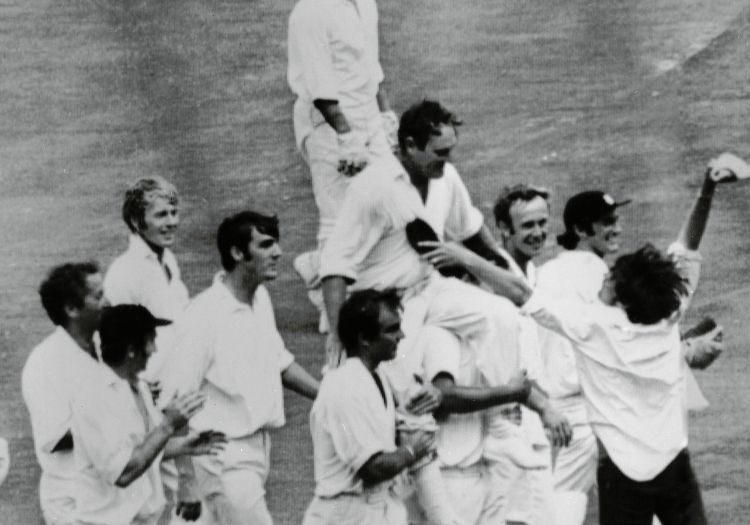

“Beer bottles were being thrown. The chap who moved the sightscreen was hit by one and taken to hospital. I called everyone into a huddle and we told the authorities: ‘Any more bottles and we will not play.’ Snowy was grabbed by a fan and could have been punched. The press missed it – they were probably on the gin and tonics by then.”
The Ashes were within the grasp of England captain Ray Illingworth midway through the seventh Test – yes, you read that right – of the 1970/71 series at Sydney, but there was a danger the campaign could end in defeat and controversy.
England led 1-0 thanks to a comprehensive win at Sydney in the fourth Test, and were back at the same venue after the management had agreed to tack on another match once the third Test had been abandoned without a ball bowled at Melbourne. To have a gruelling tour extended, and to be paid a pittance as a bonus, infuriated Illingworth and his men.
Now they looked as if they might lose this extra Test, which would have allowed Australia to retain the Ashes after drawing 1-1 in England in 1968.
What a coup that would have been for Ian Chappell in his first Test as Australia captain. He had replaced Bill Lawry, England’s tormentor five years earlier. Lawry had been dropped this time, partly for slow-scoring, and had discovered his fate while listening to the radio.
Chappell put England in, and they struggled. Illingworth made a doughty 42, but a total of 184 looked inadequate. The tourists managed to take two wickets on the first evening, and the following day had Australia 66 for 4, though they rallied to 264, thanks to half-centuries from Greg Chappell and Ian Redpath.
It was at the end of this innings that trouble flared. Terry Jenner, batting at No.9, ducked into a ball from John Snow and was hit in the face. He was carried off, and umpire Lou Rowan ordered Snow to stop bowling bouncers.
Illingworth, as captain, protested. The actual protest was lost a little in translation, as it appeared he was wagging an admonishing finger at the umpire. Illingworth says he was actually signalling that Snow had bowled only ‘one’ bouncer – and even that was a moot point. The upshot was that Rowan gave Snow an official warning.
Illingworth was still incredibly sharp-minded when I called him before Christmas 2009. “Snowie’s ball to Jenner was never a bouncer,” he told me now. “I was at short-leg and it was just short of a length. Jenner misjudged it, and we actually appealed for lbw, although it was going six inches over. When Lou Rowan gave Snowy an official warning, I asked him, ‘Why?’ He said, ‘Law 46, intimidatory bowling’. [Fellow umpire] Tom Brooks didn’t support it. I was worried that Snowy was going to lose his temper and he would start bowling bouncers. He bowled one and turned to the umpire and said, ‘Now that’s a bloody bouncer’.”
That was only half of it, however, as Illingworth’s typically blunt quote at the top of this article underlines. The crowd were incensed and focused their fury on Snow. There is a famous photograph showing one disgruntled spectator manhandling the fast bowler on the boundary edge. Illingworth had had enough and sat his team down in the middle. As cans and bottles continued to rain down, he led his men off. Rowan threatened to award the match to Australia, and with it the Ashes. Illingworth came under pressure from tour manager David Clark to resume and eventually acceded.
Keith Fletcher, on his second overseas tour, had a slightly different take on events to Illingworth, however. “I thought the business with the crowd was a lot of nonsense,” he told me. “A lot was made out of very little by everyone. Illy got a bit carried away with it. Yes, they threw a few cans, but it was nothing like the riots I’ve seen in Pakistan. It was a skirmish, certainly not life-threatening. One or two police could have sorted it out by pushing back a few spectators who’d had too much to drink.”

Ray Illingworth captained England to a 2-0 victory
Whatever the scale of the rumpus, it certainly put fire in English bellies. England were all out for 302 in the second innings, Brian Luckhurst and John Edrich scoring half-centuries, setting 223 to win.
Snow then bowled Ken Eastwood – an inadequate replacement for Lawry – with his sixth ball. But in the fifth over, England suffered a major setback: Snow, fielding at long-leg, collided with a boundary fence and broke a finger. He was unable to add to his remarkable tally of 31 wickets in the series.
With Keith Stackpole going well for Australia, the target suddenly looked attainable. Until now, Illingworth had captained and batted inspirationally, but he had under-used his off-spin. Now it was time to shine with the ball. He bowled Stackpole for 67, and then, on the fifth day, had Australia’s last hope, Greg Chappell, stumped by Alan Knott. England prevailed by 62 runs, and regained the Ashes after 12 long years.
Wisden’s EM Wellings wrote: “No captain of a touring team since DR Jardine nearly 40 years ago has had such a difficult task as Raymond Illingworth.”
Nearly 40 years on, Illingworth’s accounts were detailed, and delivered at great speed. “That match had everything,” he said. ‘Annoyingly we lost Geoff Boycott beforehand. They made us play some silly one-dayer against Western Australia, and he had his arm broken by a length ball from Graham McKenzie that reared up.”
Boycott, with a tour aggregate of 1,535 runs, had been close to breaking Walter Hammond’s 1938/39 record of 1,553 for an Ashes tour.
“It had rained for two days; there was two inches of grass on the pitch and the outfield was too long – you could hardly hit a four on that first day,” said Illingworth. “It was a heck of a toss to win and unfortunately I lost it. I firmly believe if we’d won the toss we could have bowled them out for 70 or 80.
“At 160 for 8 in our first innings I was thinking of declaring that evening to have a go at the Australians as the forecast was good for the next few days. We had to get wickets that night, and we did: Australia finished on 13 for 2.
“Of course, the following day they had two mowers on the outfield, so to bowl them out for 264 when they had better conditions and a better outfield wasn’t a bad effort.
“Although the wicket improved, they still had a handy lead. In our second innings a lot of players got in, but no one made that big score we needed. Mind you, 302 was decent on that pitch.
“To lose Snowie was a blow, but everyone rallied round, and the fact that we sneaked home was a tremendous effort. Everyone bowled as well as they could. Everyone says Australia had a weak batting line-up, but they had five players who went on to score more than 5,000 Test runs.”
When England arrived in Australia they found a host country starting to recognise the rights of Indigenous Australians, with Neville Bonner becoming the first to be elected to sit in the federal parliament.
On the field, England had been underestimated by the hosts. When they arrived, Neil Harvey, by now a selector, called them “rubbish”. Sir Donald Bradman, Australia’s chairman of selectors, criticised Illingworth’s leadership, saying he overdid leg-side field placing (obviously still a sore point after Bodyline). Others labelled England ‘Dad’s Army’, pointing out their average age was more than 30. Indeed, Illingworth was 38, but had been rejuvenated after leaving Yorkshire for Leicestershire, where he became captain.
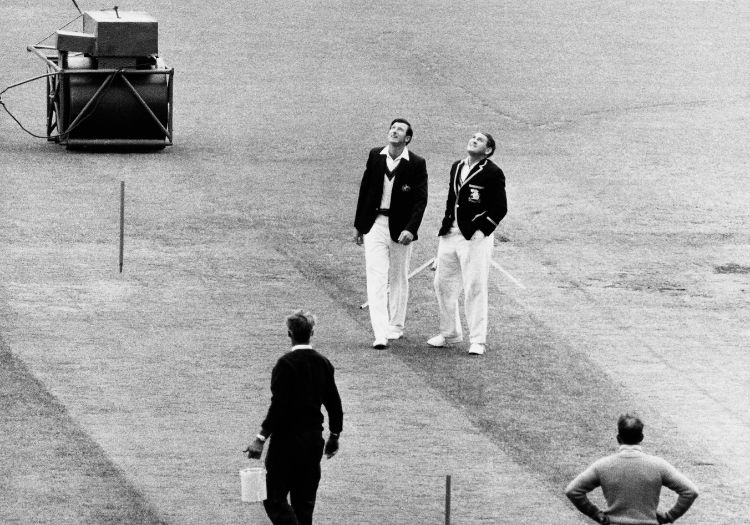
The captains, Bill Lawry and Ray Illingworth, head out to the middle for the toss at the MCG
Colin Cowdrey was England captain the previous summer until he snapped an Achilles tendon. At last it appeared that the age of the amateur captain was over, although remnants of that culture remained when it came to selecting tour managers. Illingworth had only been a county captain for a month when he was elevated to the position by his country ahead of Tom Graveney, who had been deputy, and Brian Close. The latter had led England to six wins in seven Tests (with one draw) against West Indies, India and Pakistan, but had lost the role after refusing to apologise when accused of time-wasting for Yorkshire in a County Championship match against Warwickshire at Edgbaston.
Many felt that Illingworth would merely be a stop-gap, chosen because he was not a long-term threat to Cowdrey. He performed so well, though, that even when Cowdrey was fit again, he was overlooked.
Illingworth did not enjoy his early Test career. He had matured with age, though, and took 20 wickets at 13.30 apiece against India in 1967, and 13 at 22.39 against Australia in 1968. The captaincy was the making of him, and he led England to series wins over West Indies and New Zealand in 1969, and also pushed a strong Rest of the World XI hard in 1970.
“There was the usual lobby in the usual quarters for Cowdrey to return as captain, but I didn’t really get worried about it. If there was any justice around I would get the job,” he wrote.
Unlike his predecessors who led England to Australia, Illingworth had the power to insist on good accommodation and travel arrangements, allowances and pay.
“My way is that all players played under one rule,” he told me. “It didn’t matter if they were stars. They might grumble, but there was no argument back. England had had a poor run when I took over and it took me a little time to get that side together, but I was very happy with the team picked. We started off as we meant to go on. People shared rooms and we mixed them up so it was not just southerners together, or northerners. The only people who were tricky were Boycott and Knott. Knotty liked to get up at 6am, while Boycs slept in, so we eventually gave them single rooms!”
Both Australia and England had suffered recent defeats: Australia losing to South Africa in 1969/70, and England to Gary Sobers’s World XI. Those hastily arranged matches in the summer of 1970 to replace the scheduled tour of the now banned South Africans, were deemed ‘unofficial’. That meant that England’s last official defeat was 14 matches ago, the 1968 Ashes opener at Old Trafford.
England’s campaign in 1970/71 was built on strong opening stands – Boycott and Luckhurst opened in the first five Tests, Boycott and Edrich in the sixth and Edrich and Luckhurst in the seventh as injuries took hold. Between them they compiled 995 for the first wickets at an average of 90.45.
“Geoff said he batted better on that tour than any other,” said Illingworth. Edrich also made 648 runs at 72, Luckhurst 455 at 56.87, and Boycott 657 at 93.85.
England also thought they would be equally strong with the ball. They had high hopes of a new-ball alliance between Snow and Alan Ward, who had been compared to Frank Tyson.
“We felt it could be the best partnership in the world, but Ward developed shin splints, and it couldn’t be cured in a matter of weeks, so he had to come home,” said Illingworth. Bob Willis was sent over to replace him. Bob came out on Edrich’s say-so. ‘He won’t let you down,’ John said. No one had really seen him bowl, but he did a great job. Bob’s father said he learned more in those months than he had in his whole life. We told him where to bowl at certain batsmen and he did it.”
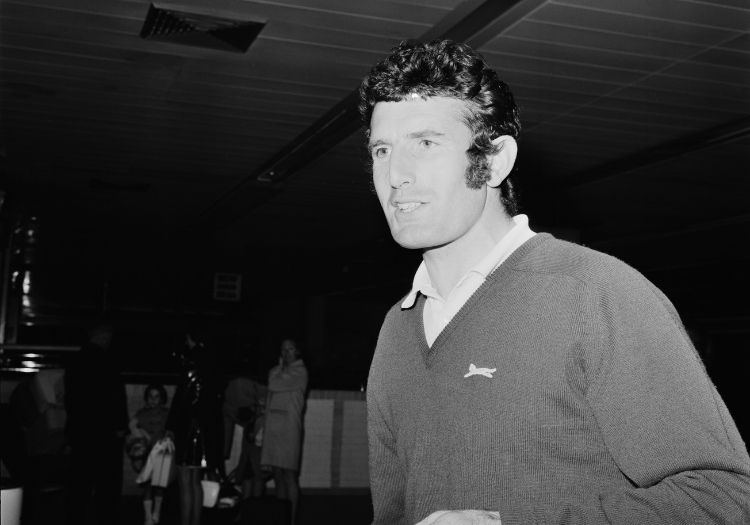
John Snow starred for England, taking 31 wickets at 22.83 apiece
Snow took only seven wickets (at 71.57) in the state games but was the bowler of the Tests, while Willis, Ken Shuttleworth and Peter Lever provided good support.
In the spin department, Derek Underwood had taken 7 for 50 against Australia at The Oval in 1968 to win the match and square the series with five minutes to spare. He did not have a great tour, but, like Illingworth, had his moments.
Despite the jibes, age did not seem to be a factor, even though only Fletcher, Knott, Willis, Ken Shuttleworth, Underwood and Snow (just) were under 30.
“If you looked after yourself – didn’t drink too much, take drugs or do anything silly – age wasn’t a problem,” said Illingworth.
“The only person who shouldn’t have gone was Cowdrey. It took him three weeks to accept the offer of being vice-captain – he shouldn’t have been my deputy if it took him that long. He showed no interest – sometimes he didn’t even turn up at practice. Having taken so long to decide, I think his misgivings were such that he should have said ‘no’.” Illingworth would have preferred Boycott in the role.
While Illingworth’s frustrations with the management were nothing like those he experienced in 1962/63, he did have problems with David Clark, Cowdrey’s fellow Kentish Man. Clark had been Kent’s amateur captain between 1949 and 1951, and was described by Illingworth as “an amiable, but somewhat ineffectual man”. The Clark/Cowdrey clique also put county colleagues Knott, Luckhurst and Underwood in an uncomfortable position.
The series “emphasised the gulf between players and administrators,” wrote Snow. “I was sick of the biased attitude and incompetence which was apparent in cricket administration.”
By now, the diminishing influence of the Establishment was apparent, however. “The Establishment weren’t respected in the way they had been 15 years earlier,” said Roy Hattersley. “Suddenly we were laughing at people we wouldn’t dare laugh at in the 1950s.” Illingworth overcame major interference, thankfully.
England suffered an embarrassing defeat to Victoria, but started the Test series well, drawing at Brisbane. Snow prevented Australia’s first innings running away from England by slicing through the tail with 6 for 114, reducing the hosts from 372 for 2 to 433 all out. Stackpole hit an aggressive double-century, and inevitably Doug Walters a single one.
England also collapsed after a decent start, but still built a small lead, with 70s for Edrich, Luckhurst and Knott. Though Shuttleworth took five wickets, as Australia slumped to 214 all out, Lawry’s stubborn 84 off 317 balls meant England did not have time to chase a target.
Snow bowled 52.3 eight-ball overs in the match, but ahead of the second Test was forced to practise in the nets by Clark. He bowled a couple of half-hearted overs and received a dressing-down from Clark. Snow said: “As far as my good conduct money was concerned he could swallow it.” He was not seen again until the following day.
Illingworth admitted that he had given Snow a wake-up call after a shoddy display in the field against South Australia. “Snowy, if you weren’t an intelligent bloke, you’d now be on the boat home,” Illingworth told him. After that, they were “right as rain”.
Boycott also played a part in motivating Snow. “Illingworth asked me to ‘gee him up’ a bit,” Boycott wrote. “I got into the habit of needling Snow. ‘When are you going to let one or two go and bowl quick?’ I’d ask. ‘You’ll never get anyone out bowling at medium pace,’ I would say. Snowy got quite mad, but my tactics did the trick.”
England again matched their hosts in the second Test, the first to be played at Perth. The tourists totalled 397, Luckhurst making 131 and Boycott a stolid 70, but Australia claimed a first-innings lead of 43, thanks to Ian Redpath’s 171 and 108 from debutant Greg Chappell.
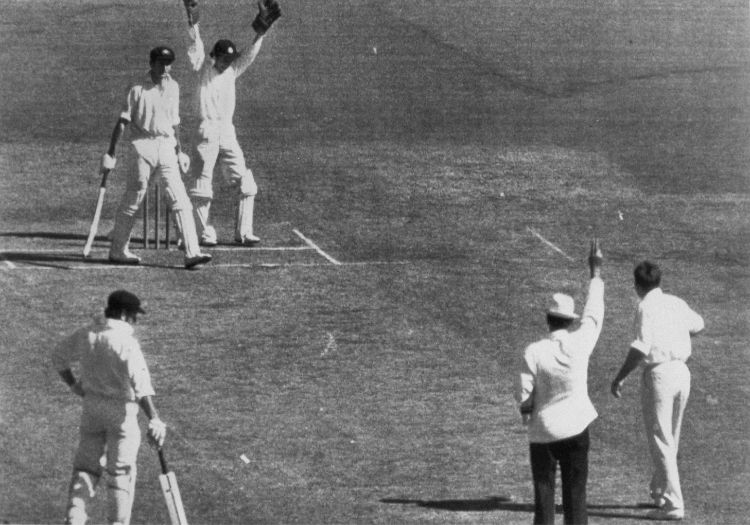
The first-ever ODI was played between the third and fourth Tests, with Australia coming out on top
England then declared on 287 for 6, with Edrich making 115, and Australia reached safety on 100 for 3. Lawry passed 5,000 Test runs and 2,000 against England, but Wisden described his 111-ball innings of 38 not out as “craven”.
After the second Test, Clark criticised both captains for cautious play and England for their short-pitched bowling. Asked if he would prefer four more draws or Australia to win 3-1, he replied: “I’d rather see four results” than four stalemates.
Illingworth only found out what Clark had said when told by a journalist the next morning, and his team were angry, after reading the newspapers at the airport.
The third Test at Melbourne, which was to have been played over the New Year, was abandoned without a ball bowled. Instead, a match of 40 eight-ball overs was played on the last scheduled day. Australia won the first one-day international on January 5 1971, in front of 46,000. The first one-day international was contested on the same ground that had given birth to Test cricket. Like that inaugural Test, Australia won, but it was a low- and slow-scoring affair. Edrich made the first ODI half-century, and England set Australia 191 to win, which they did with 6.2 overs to spare, Ian Chappell hitting 60. “Neither side took it too seriously,” reported Illingworth.
It was during this Test that the England management agreed to a seventh Test, with Clark supported by visiting MCC officials, Sir Cyril Hawker and Gubby Allen. While Illingworth had effectively taken over the running of the tour with the support of the players, Clark won this argument.
“We were told to play an extra Test for no money,” said Illingworth. “I rang Donald Carr [the MCC’s assistant secretary] off my own back and said we would have a full house at Sydney [the gate receipts would be £70,000]. He offered us £25 a man. How daft is that? I said, ‘Twenty-five pounds? – that’s not much’.” He said he would see what he could do. Sure enough, though, that’s all we got!”
England did not let the dispute affect their performance in the fourth Test at Sydney, however, as they won by 299 runs. Boycott and Snow shared top billing in the match, the batsman for his 77 and 142 not out, the bowler for his 7 for 40 as Australia were bundled out for 116 in their second innings.
“Snowie bowled brilliantly, although he got a little help from the pitch as the odd ball was displacing the surface,” said Illingworth. ‘“But he still showed real skill, and it was just the victory we needed. A lot of the pitches were dead, but this was a natural result surface.”
Fletcher told me: “Snowie was the difference between the teams. We had an adequate batting line-up, but our bowling attack was quality – Snow, with Peter Lever and Shuttleworth providing good back-up.”
The fifth Test, back at Melbourne became known as ‘The Tarnished Test’ after a stampede of 2,000 fans when Ian Chappell, fighting for his place, reached his hundred in Australia’s first- innings 493 for 9. The invaders nabbed his cap, Cowdrey’s hat and a stump.
Rod Marsh also made 92 not out and England dropped eight catches, four by Cowdrey at slip, including one off Chappell off Snow when he had not yet scored. Lawry then delayed his declaration into the second evening, but when it did come, it deprived Marsh of a hundred.
Lawry’s captaincy was under fire by now, but Fletcher defended him. “That was typical of the fans, demanding he go, but you only captain with what you have,” he said. “It was only an average Australian side. He did not have a great deal of flair, and he didn’t know how to create pressure like Illy did, but he was steady. He wasn’t as good a captain as Illy, but Illy had learned in a tough school, that Yorkshire team of the late 1950s and 1960s.
“As to the slow scoring, Test cricket was played at a different tempo then. Nowadays you let a ball go and you’re seen as negative!”
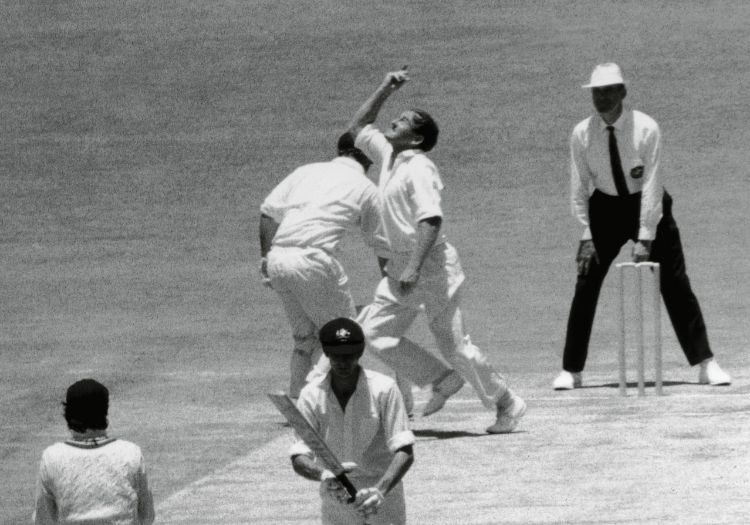
Ray Illingworth has Ian Redpath caught and bowled for 171 during the drawn second Test in Perth
England scored 392 in reply, but again the crowd’s behaviour was poor, with Boycott and Edrich batting against a background of booing, handclapping and banging of empty beer cans.
The tourists were grateful for centuries from Basil D’Oliveira and Luckhurst. In the end England never got close to their target of 271, finishing on 161 for 0, thanks to Boycott’s unbeaten 76 and 64 not out from Edrich
“Luckhurst was out with a broken finger and Dolly had a bruised foot,” said Illingworth, “so we declined the invitation to commit Test suicide.
“The pitch invasion was over-exuberance really – after the crowd cleared we found a spectator laid on the pitch unconscious. It was as a result of that game that they brought in sensible rules about fans coming on to the playing area.”
England preserved their 1-0 lead with a draw in the Adelaide Test, which started just two days later. This time it was Illingworth’s turn to be criticised.
The tourists made 470 thanks to Edrich’s 130 and 80 from Fletcher, with Dennis Lillee taking 5 for 84. England then assumed control, Lever taking four wickets as Australia struggled to 235.
Illingworth declined to enforce the follow-on, and by the time he declared England’s second innings on 233 for 4 (Boycott scoring an unbeaten 119) he left the hosts eight hours and 20 minutes to make 469. They finished on 328 for 3.
“I’d needed to take the second new ball to finish Australia off in the first innings, and Snowie and Lever had a blast,” said Illingworth. “I said to Snowie: ‘How do you feel?’ He said: ‘A bit knackered.’ He lost half a stone in that heat – there was not an ounce of fat on him anyway – and Lever said he’d gone in his shoulder. But both said: ‘If you want to enforce the follow-on, do it.’ But I decided to bat again. We hoped the pitch would turn more on the final day. Unfortunately the weather stayed at 70 degrees, not 90. My wife was cold! It did turn a bit, but only in the last hour. I still think it was the right decision. If we’d enforced the follow-on, we might have found ourselves needing 200 on the final day, and we could have been under pressure.”
Fletcher disagreed, though. “My own opinion is that we should have made Australia follow on. They were dead flat – really demoralised – and it was quite near the end of day three, so we could have had a bowl at them and then rested overnight. The decision was a little bit defensive, but Illy didn’t make many mistakes on the trip.”
England sealed the series win in the extra Test, and Illingworth dug up a remarkable fact during our conversation. “We didn’t get one lbw decision in all the Tests. The Law back then was that if it pitched outside off stump it couldn’t be given – Australia got plenty, though – yet we still bowled them out for under 300 six times. We brought back the Ashes – we beat Australia in Australia. It was a fantastic performance. We did it in spite of a lot of problems, and I shall always be very proud of that.”
Greg Chappell agreed, writing: “Illingworth’s side in 1970/71 were mentally the toughest English side I played against. He subjected us to mental intimidation by aggressive field placings, and physical intimidation by constant use of his pace attack, ably led by one of the best fast bowlers of my experience, John Snow. Winning to Illingworth was something he expected of himself and demanded of his team.”
Illingworth captained England in 31 Tests from 1969 and 1973, winning 12, drawing 14 and losing just five. They retained the Ashes under him, drawing 2-2 at home in 1972, but a new leader was needed the next time England returned to Australia.
RELATED STORIES
Ashes Chronicles - Part 1: The hastily arranged tour of 1946/47
Ashes Chronicles – Part 2: Bedser carries struggling England as Close has a nightmare in 1950/51
Ashes Chronicles – Part 3: Typhoon Tyson blows Australia away in 1954/55
Ashes Chronicles – Part 4: England find series a drag in 1958/59
Ashes Chronicles – Part 5: Illy blasts ‘The Sussex Tour’ – 1962/63
Ashes Chronicles – Part 6: Air travel spooks England in 1965/66